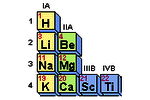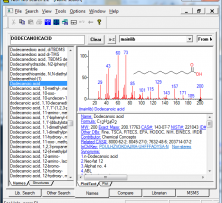- ▶
- Heaters/Source
- ▶
- Agilent Heaters and SensorsMass Spectrometry, Scientific Supplies & ManufacturingScientific Instrument Services 5973 Source Heater Tamper Resistant Allen Wrench 5973/5975 Quad Sensor 5985 Source Heater Assembly Agilent Interface Heater Assembly 5971 Interface Heater

- ▶
- LiteratureApplication Notes Adsorbent Resins Guide Mass Spec Tips SDS Sheets FAQ MS Calibration Compound Spectra Manuals MS Links/Labs/ Organizations MS Online Tools Flyers on Products/Services Scientific Supplies Catalog About Us NextAdvance Bullet Blender® Homogenizer Protocols Micro-Mesh® Literature Instrumentation Literature Agilent GC/MS Literature SIS News / E-Mail Newsletter NIST MS Database - Update Notifications

- ▶
- MS Online ToolsIsotope Distribution Calculator and Mass Spec Plotter Mass Spectrum Generator Exact Mass Calculator, Single Isotope Version SIS Online GC Chromatogram and Mass Spectrum Viewer Search NIST 23 MS Databases Mass Spec Calibration Compounds and Spectra Exact Masses of the Elements and Isotopic Abundances

- ▶
- Exact Mass Calculator, Single Isotope Version (This Page)
Overview
This is a very primitive exact mass calculator. Given the formula of a chemical species, the calculator determines the exact mass of a single isotope of that species and the relative abundance of that isotope. The isotope selected has the property that each atom in the species is the most abundant isotope of that element. For low mass chemical species, the chosen isotope is often the most abundant isotope of the species; however, this is often not the case for larger mass species due to the need for a more complex algorithm to make such a determination.
Instructions
Type in the chemical formula. The results will be displayed. (This program requires that JavaScript is enabled in your web browser.)
How to input chemical formulas
Chemical formulas can be inputted according to a straightforward syntax. Include no spaces in input. Element names are case sensitive. Express formulas in terms of atoms (functional group abbreviations are not supported).
Examples:CH3COOH is written as CH3COOH
H2SO4 is written as H2SO4
Mg(OH)2 is written as Mg(OH)2
Other Tools
For a more advanced isotopic calculator, see the Isotope Distribution Calculator and Mass Spec Plotter.
Implementation Notes
This program is written entirely in JavaScript. You can invoke your browser's "View Source" feature to see the source code. Most of the core code is confined into a separate source file named "exactmass.js".
The architecture of the program can be understood in terms of compiler theory. The program first retrieves the chemical formula as a character string. This string is fed into a lexer, which converts the character string into a stream of tokens (e.g. atom names, numbers, and parenthesis). Invalid tokens (e.g. "Zy" or "%") produce an error. The parser sequentially reads tokens from the token stream. The parser is implemented as a state-machine, and the state of the parser changes as a function of the current parser state and the current token being read. By limiting the set of valid tokens at each state, the parser get make a distinction between syntactically valid (e.g. "Mg(OH)2") and syntactically invalid (e.g. ")MgO(H2") formulas. Note however that a syntactically valid formula ("CH6") is not necessarily semantically valid; this program makes no effort in determining semantic validity. During the parse phase, calculations are performed (i.e. generated). It is convenient that the parse and the generation phases can be closely coupled.
The mathematics is handled according to the following principle. An isotope of the form aAbB, where A and B are functional groups, themselves isotopes, has a mass of a + b and an fractional abundance equal to the product of the fractional abundances of the given functional group isotopes in their respective functional groups. The problem can be solved by recursion.
(c) 1996-2016 Scientific Instrument Services, Inc.
Data is obtained from the CRC Handbook of Chemistry and Physics.
Disclaimer: Scientific Instrument Services is not responsible for any
errors which may result from the use of this program.


 We repair or replace old MS filaments
We repair or replace old MS filaments
 Inland 45 and Other Vacuum Oils
Inland 45 and Other Vacuum Oils
 NIST 14 MS Library - Identify Mass Spectra
NIST 14 MS Library - Identify Mass Spectra
 Electron Multiplier for Agilent 5973 (many more available)
Electron Multiplier for Agilent 5973 (many more available) Rotary vane or dry pumps, including affordable SIS pump
Rotary vane or dry pumps, including affordable SIS pump
 Syringe Pumps by New Era, low cost
Syringe Pumps by New Era, low cost
 Micro-Mesh® cushioned abrasives for superior finishes
Micro-Mesh® cushioned abrasives for superior finishes
 SIS All-in-One Vacuum Filter Kits
SIS All-in-One Vacuum Filter Kits
 Agilent IDP-3 Dry Pump - for 5973/5975/5977 MSD, no more oil
Agilent IDP-3 Dry Pump - for 5973/5975/5977 MSD, no more oil
 Ion Gauge Tubes for Agilent 597X and others
Ion Gauge Tubes for Agilent 597X and others
 Expert MS Source Cleaning Service by SIS
Expert MS Source Cleaning Service by SIS